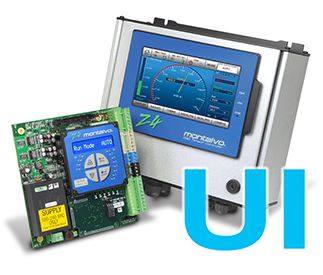Downloads, FAQ’s and more.
*for drawings please visit the Z4-UI product page
U.S.: 1-800-226-8710
Germany: +49 (0)511-760 691 41

Unwind Zone, Dancer and Load Cell Feedback
Downloads, FAQ’s and more.
*for drawings please visit the Z4-UI product page
*for drawings please visit the Z4-UI product page
This controller is utilized only on the unwind end of the machine.
No
The controller can control any level of tension. The tension limits, high or low depend primarily on the capacity and resolution of the torque control devices (brake/clutch). The controller has the sensitivity and adjustability to regulate to essentially zero tension, and manage the highest levels of tension with respect to the capacities of the load cells and torque devices.
The controller can manage accurate tension control regardless of line speed. The limits are determined by the motor/drive capacities, and ultimately, by the process itself. The controller does not care what speed the machine runs at.
Not necessarily. The Montalvo Z4-UI Controller is a hybrid controller that utilizes analog signal processing for the actual tension control loop, while utilizing a digital interface for programming that simplifies programs and offers many optional features. Analog signal processing is real-time. Digital signal processing is limited by processor clock-speed. While modern processors are extremely fast, none are as fast as analog. That being said, digital processing may be fast enough for many applications. Montalvo offers a fully digital load-cell based system with our S4 system.
A well designed dancer system with a good dancer controller is an excellent method of managing web tension. However, no dancer system can tell you what your actual web tension is. The tension can be inferred, but without load cells, actual web tension cannot be known. In order to improve process consistency from job to job, shift to shift, and if a wide range of products are processed requiring different tension values, web tension measurement with load cells is the only way to ensure consistency. Fortunately the Montalvo Z4-UI has inputs for load cells, and can provide the actual tension reference for process consistency, and the storage advantages of the dancer system.
Yes, the Z4-UI can effectively become a dancer control system with setpoint control. By adding a secondary I/P (current to pneumatic) converter to the system, the operator can adjust the tension setpoint to calibrated tension values and the controller will adjust the load to the dancer loading air cylinder to provide the appropriate tension level. No other dancer controller on the market can offer this level of functionality.
It depends. It depends on many factors. Primarily it is the process itself that dictates the best method of control. Processes that require rapid acceleration and/or deceleration respond better to dancer control methods. Indexing, or Start/Stop applications with relatively short dwell or idle times respond better to dancer control due to the web storage capacities that well designed dancer systems afford. Continuous application where on-the-fly splices are utilized, dancer systems again provide necessary web storage for smooth, trouble-free splices. The disadvantage of most dancer systems is that they do not tell you what your actual web tension is. Load cells will indicate the actual web tension to ensure consistent processing.
Load cell calibration should be conducted at least annually, unless there are indications such as failure to return to zero, that may indicate more frequent intervals. If the system needs more frequent calibration than twice yearly, it could indicate a problem with the load cell system, either mechanical or electrical.
If a controller is not correctly and consistently managing web tension, and is exhibiting fluctuations, the easiest way to determine if it is the tension control system or some other factor creating the problem is to put the controller into its manual mode. If the tension stabilizes, and becomes more or less constant, this indicates a control loop problem. If there is no or minimal difference in the tension between closed-loop automatic control and manual mode, this typically indicates some mechanical issue in the system such as bad idler roll bearings, surging drives, core slippage or some other mechanical issue.